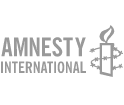By Vanessa Cezarita Cordeiro
In the last decade, child labour has decreased by 38%; however, 152 million children are still affected and the COVID-19 pandemic has exacerbated the situation. Child labour reaches many different corners across the world, often occurring in various sectors that can have detrimental educational, health and psychological impacts on children’s well-being. There are various drivers of child labour such as poverty, armed conflict, inadequate laws and regulations, social inequality, discrimination and ingrained cultural traditions to name a few.
Defining child labour
The International Labour Organization (ILO) defines child labour as ‘work that is mentally, physically, socially or morally dangerous and harmful to children; and/or interferes with their schooling by: depriving them of the opportunity to attend school; obliging them to leave school prematurely; or requiring them to attempt to combine school attendance with excessively long and heavy work’ (ILO, ...
Want to see the rest of this article?
Would you like to see the rest of this article and all the other benefits that Issues Online can provide with?
- Useful related articles
- Video and multimedia references
- Statistical information and reference material
- Glossary of terms
- Key Facts and figures
- Related assignments
- Resource material and websites

 Child Labour
Child Labour








